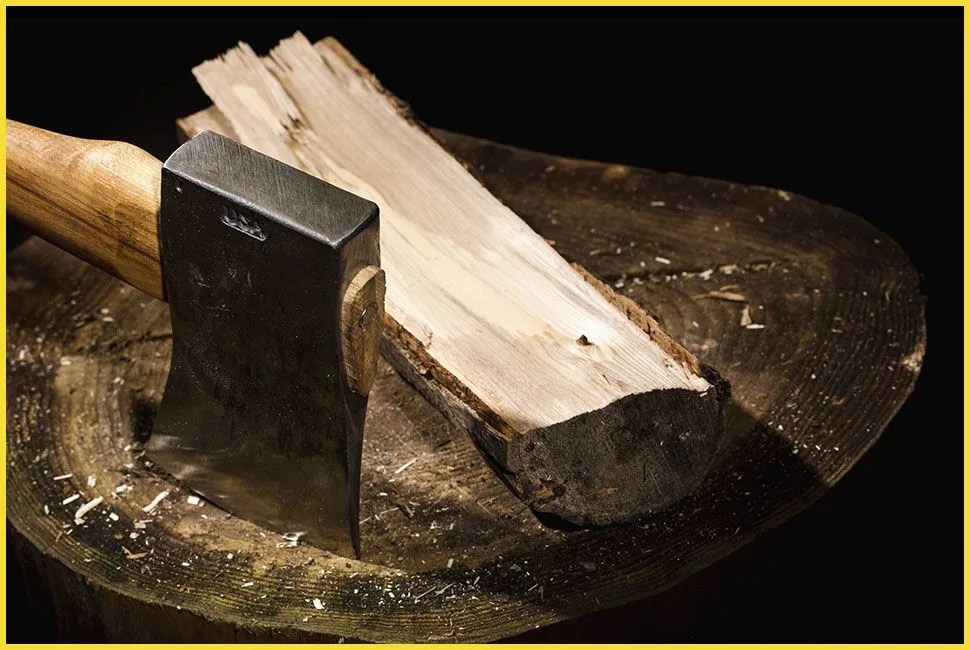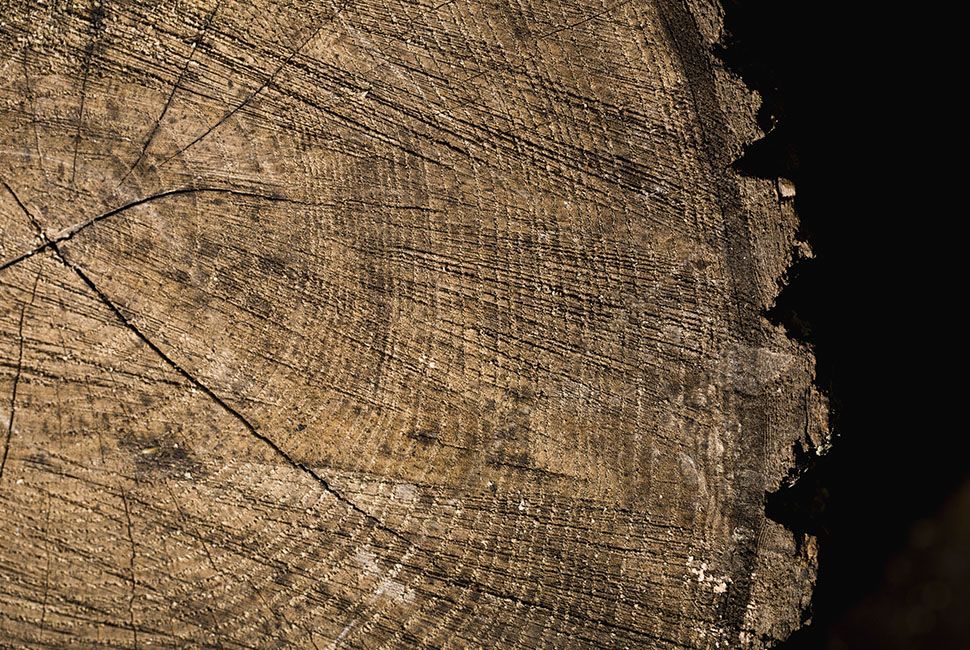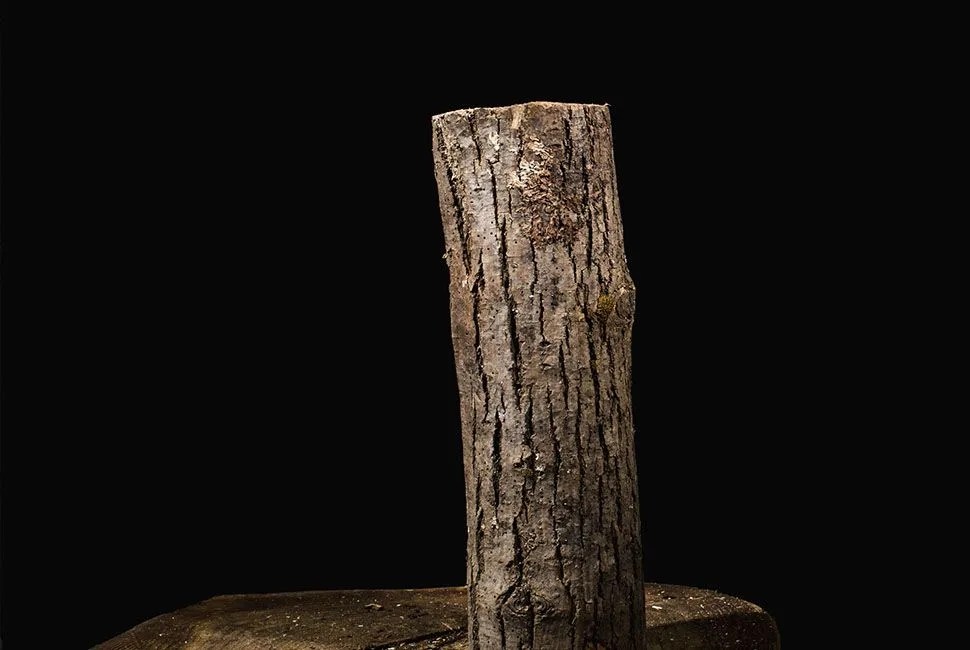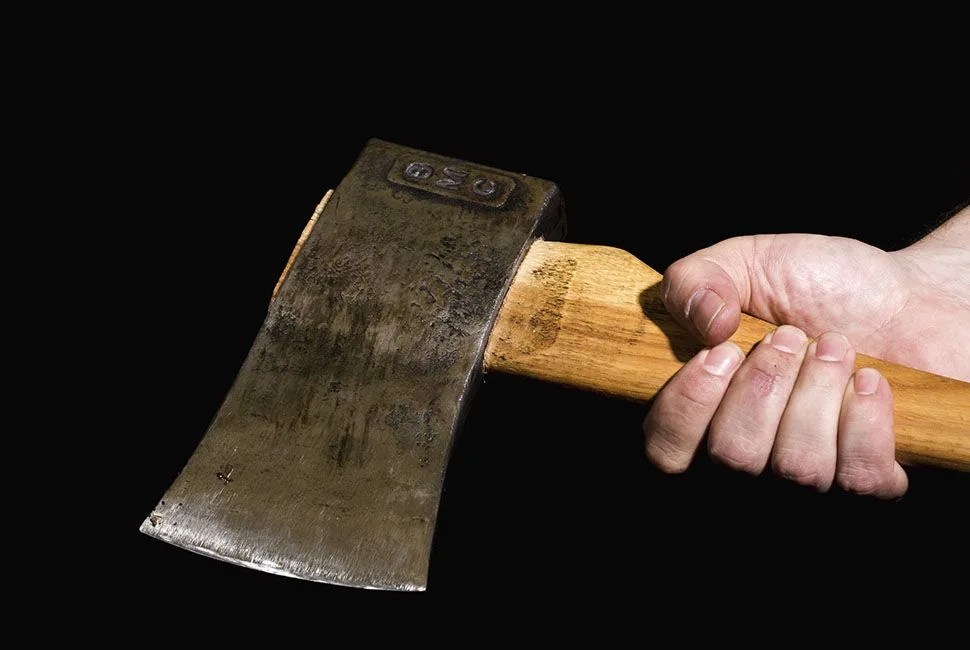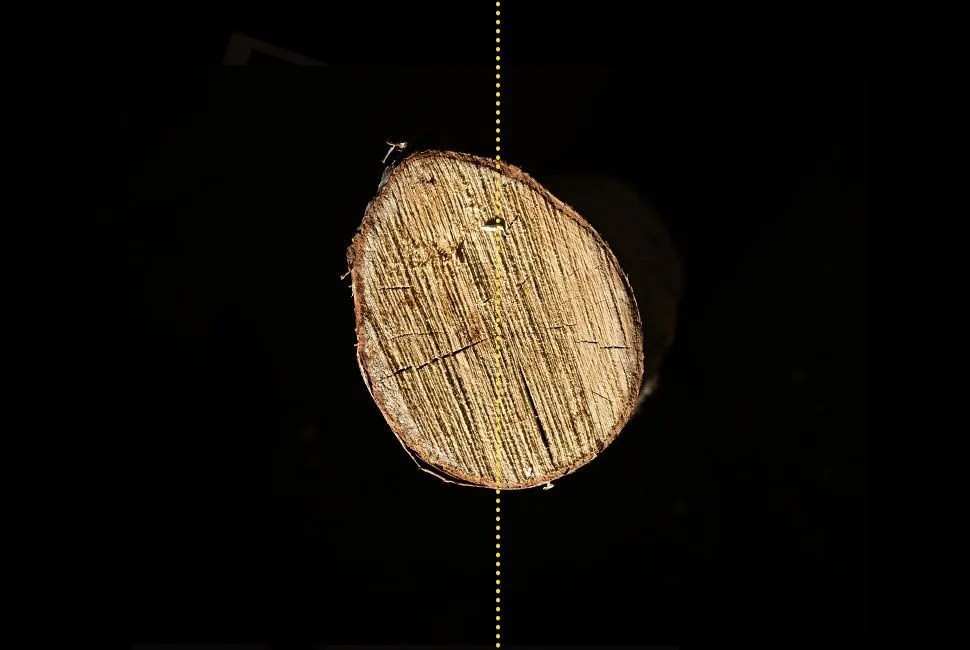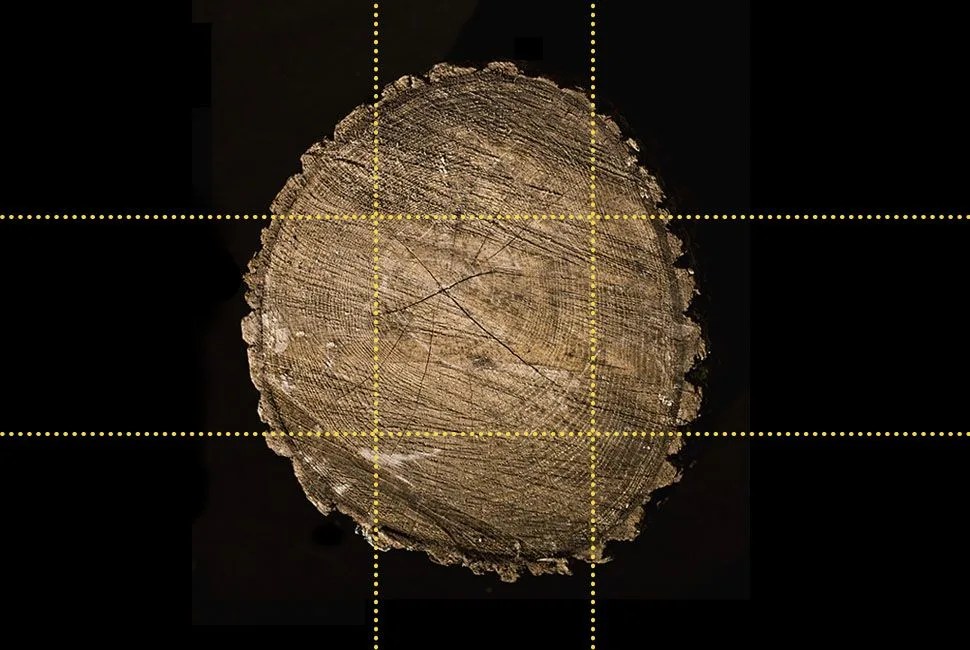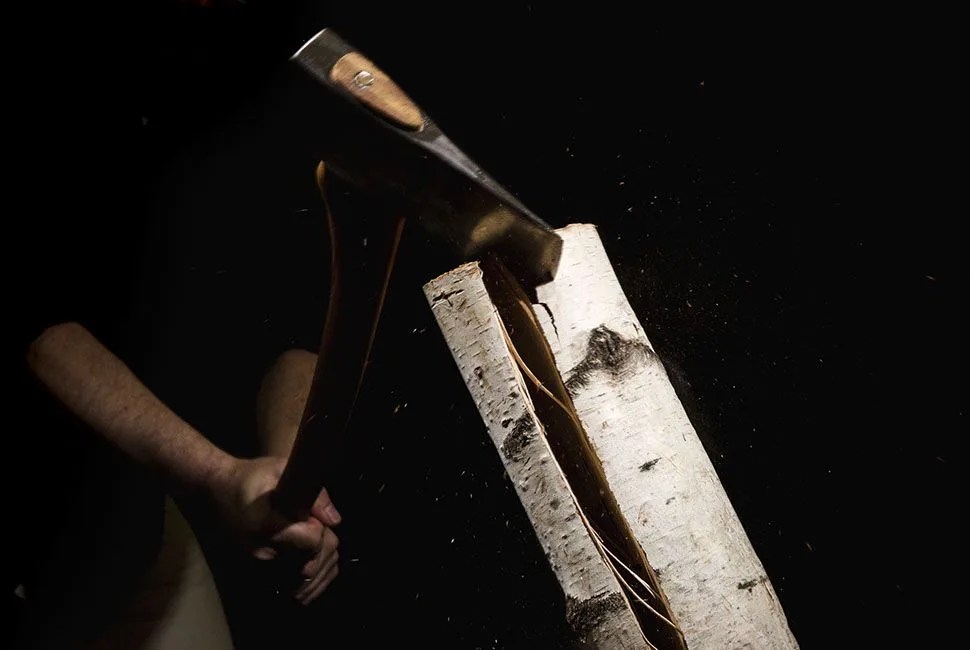There is perhaps no more manly a feeling than holding an ax high above your head and swinging down with all of the strength you can muster. This is the approach that many take when they are trying to split wood with an ax, but that’s not exactly how you should go about chopping wood. As Nick Zdon, Best Made Co.‘s resident ax expert and wood splitting aficionado, says, “It’s 100 percent accuracy.” Technique is crucial and where you strike and make contact with the wood has more to do with your chances of splitting the wood than how many protein shakes you had last week or how many small children you can bench press in one go. To find out the recommended technique, we asked Zdon to walk us through what it takes to successfully split logs that you can be proud to bring back to your campsite.
3 photos
1. Get a good ax and make sure it’s sharp. Having a quality, sharp ax is key to a successful split. Zdon recommends a 36-inch handle with a 4-pound ax head (Zdon used a Best Made Co. Felling Ax for this demonstration). As an unofficial test to see whether or not the ax is sharp enough, cut through a piece a paper. If the cut is clean and easy, you are good to go. “Or you can use your arm,” Zdon says (to shave the hairs) — though that isn’t recommended.
If your ax is dull, use a sharpening stone with mineral oil. The mineral oil helps to “lubricate” the ax and keeps the metal shavings from binding and clogging the stone. Zdon likes to use a sharpening stone with Soft Arkansas stone and Black Arkansas stone on his axes. Use a back-and-forth “sawing” motion working your way up and back on one side of the blade. Then flip the blade over and do the same on the other side.
2. Pick your wood. Picking the right wood is an important part of the process. If you are looking to stock your woodpile with BTUs for your fireplace, using seasoned hardwoods is recommended. Seasoned wood has been cut down into smaller logs and left to dry out, covered, for about six months to a year.
Take into consideration what you will be using the wood for. If you are going to be putting it in your wood-burning stove, be sure to measure the size of the wood that will fit. This will determine both the size of the log you are splitting, and how many times you are going to need to split the log. To start out, Zdon recommends splitting a log roughly the diameter of a large grapefruit (about 6 inches) and about as long as your forearm. “The shorter the pieces, the easier they are to split,” he says.
3. Place your wood on a stump or large base. The base that you place your log on should be sturdy — a large stump is ideal. Place your log on the stump close to the edge that is farthest away from you. This will give you plenty of space, if you do happen to miss, where the ax can sink into the stump instead of your leg. Make sure that the log sits sturdily on the stump so that it doesn’t fall over while you are swinging.
